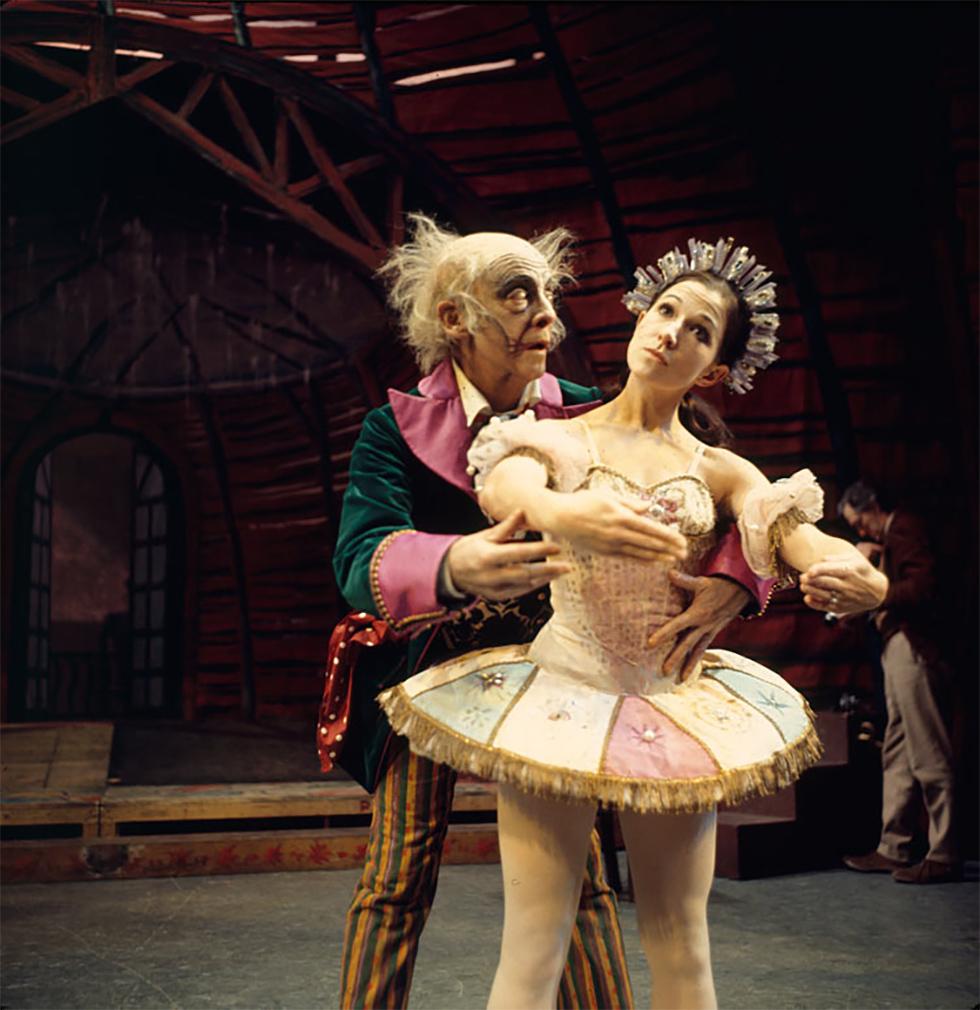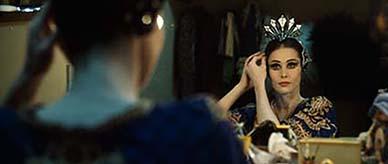


About this record
This colour photograph shows renowned dancer and choreographer Sir Robert Helpmann dancing with ballerina Barbara Chambers in the Australian Ballet's production of Coppélia. Helpmann performs the role of Dr Coppélius and Chambers the role of Swanilda. The photograph shows the scene in Act II of the ballet where Dr Coppélius believes he has succeeded in animating the mechanical doll Coppélia but it is really Swanilda in disguise.
Educational value
- Sir Robert Helpmann (1909–86) achieved world renown as a dancer, choreographer and filmmaker with a varied professional theatre career that spanned 62 years. While best known as a dancer and choreographer, the talented Helpmann was also a director, producer, filmmaker and actor, appearing in many of his own films. He was named Australian of the Year in 1965 and received a knighthood in 1968.
- Helpmann's appearance at the age of 60 in this production of Coppélia added to his fame and demonstrated longevity as one of Australia's greatest dancers. Dr Coppélius is normally performed by a mature dancer, but even when he first performed the role in Australia on the Royal Ballet's tour of 1958–59, Helpmann was dancing beyond what are normally considered a dancer's prime years. His final performance, just months before his death, was at the age of 75.
- Helpmann's early career was significant because he was lauded in Australia at a time when being a male dancer was viewed with some suspicion. He was born in Mount Gambier, South Australia, and studied dance from a young age in Adelaide. While still a teenager, he toured with Anna Pavlova's dance company on its Australian tour, then began his professional career in Sydney in 1927. He moved to Britain in 1933 and forged his reputation partnering prima ballerina Margot Fonteyn.
- Helpmann was instrumental in the creative development of the fledgling Australian Ballet formed in 1961. This photograph was taken during his time from 1965 to 1974 as co-artistic director with Peggy van Praagh. From 1975 to 1976 he was sole director. Helpmann's creative contribution to the Australian Ballet was matched by his capacity to attract audiences to the young company's performances because of his international fame.
- Barbara Chambers (1942?–) was one of the founding soloists of the Australian Ballet and at the time this photograph was taken she had achieved the rank of principal artist in the company. The role of Swanilda was one of her most admired. Born in Melbourne, Chambers started ballet at 10 years of age and became a member of the Borovansky Ballet at 17. She continued to dance overseas until 1962. Chambers retired from ballet performance in the mid-1970s.
- Coppélia, one of the most popular and frequently performed comic ballets, poses considerable technical and dramatic challenges for the ballerina, calling for stamina and skill. The ballerina has a demanding solo in Act I, dances for the whole of Act II and performs a pas de deux and variations in Act III. The dramatic challenges are no less, especially in this scene where she must both entertain the audience in her role as Swanilda and fool Dr Coppélius.
Acknowledgments
Learning resource text © Education Services Australia Limited and the National Archives of Australia 2010.
Need help with your research?
Learn how to interpret primary sources, use our collection and more.

